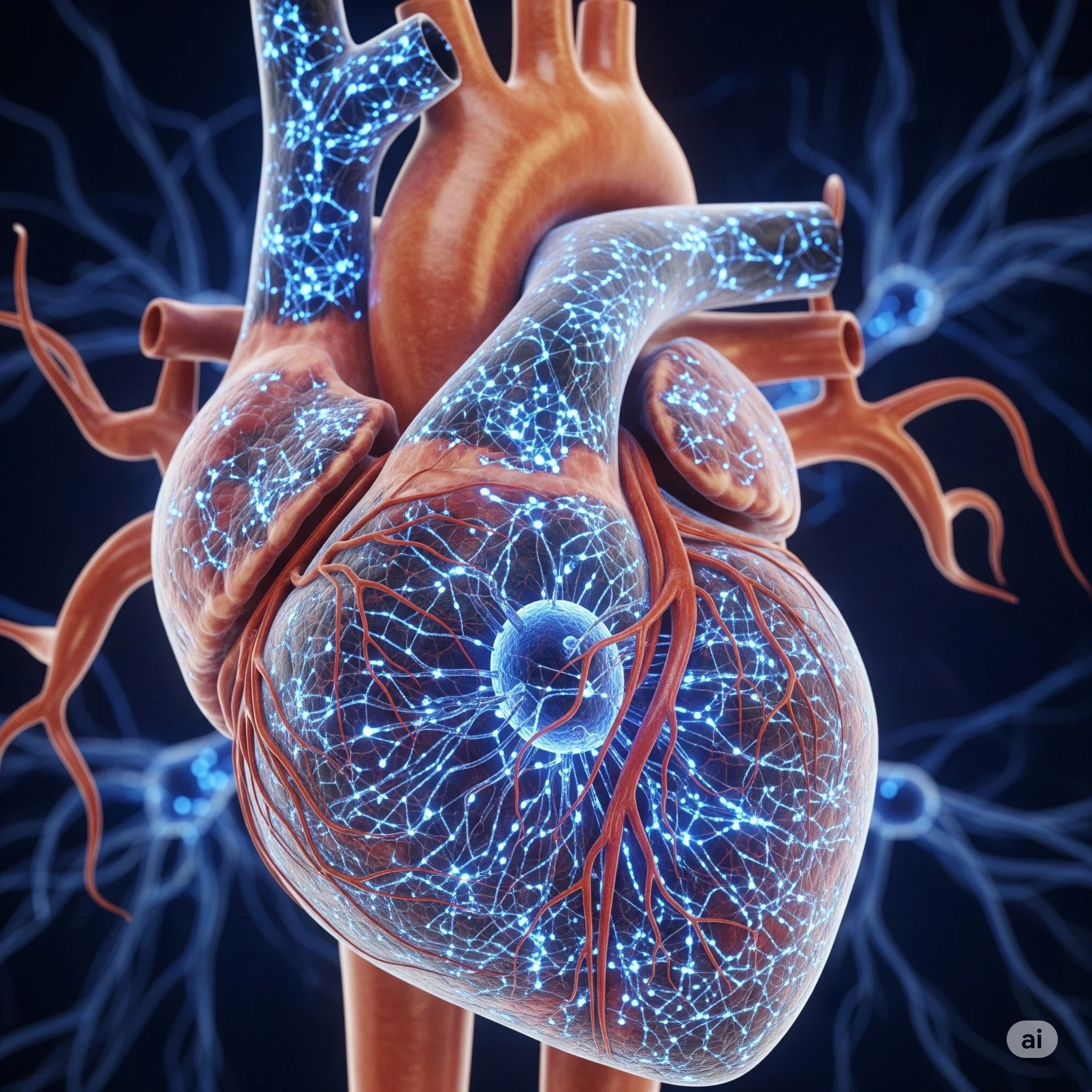The Heart’s Hidden Brain: Groundbreaking Research Reveals a Complex Neural Network Within Our Most Vital Organ
In a breakthrough that could transform our understanding of cardiovascular health, researchers from Karolinska Institutet in Sweden and Columbia University in the United States have discovered that the heart contains its own intricate nervous system—a “mini-brain” embedded within its muscular walls. Far from being a simple relay for brain signals, this newly characterized network plays an active role in controlling the rhythm of the heartbeat itself.
Published in Nature Communications, this pioneering study was conducted using zebrafish, a model organism with cardiac functions remarkably similar to those of humans. The findings challenge decades of assumptions about how our hearts are controlled—and open new avenues for treating heart disease.
A Symphony of Neurons
For years, scientists believed the heart was regulated almost entirely by the autonomic nervous system, which carries signals from the brain to command the heart’s pace. Within this model, the heart’s own nerves were seen as passive relays, responding only to external instructions. But the new research paints a far more dynamic picture.
Led by Dr. Konstantinos Ampatzis, principal researcher at the Department of Neuroscience at Karolinska Institutet, the team has identified a diverse array of neuron types within the heart, each with distinct functions—including a group with pacemaker-like properties. These neurons don’t just follow orders—they actively help regulate the heartbeat.
“We were surprised to see how complex the nervous system within the heart is,” said Dr. Ampatzis. “It’s not just a passive recipient of brain signals. It appears to have its own intelligence—a regulatory capability similar to what we see in systems controlling locomotion and breathing.”
Zebrafish, Big Discoveries
The research team chose zebrafish for their anatomical and physiological similarities to humans, particularly in cardiac function and heart rate behavior. Through cutting-edge methods like single-cell RNA sequencing, anatomical mapping, and electrophysiological measurements, the researchers were able to chart the architecture and activity of the heart’s neuronal network in unprecedented detail.
What emerged was a sophisticated system of communication and control—an internal network capable of adjusting the heart’s rhythm in response to changing conditions. These findings hint that this “heart brain” could be deeply involved in maintaining cardiovascular stability during exercise, emotional stress, and disease.
Rethinking Heart Disorders
The implications of this research are profound. Arrhythmias and other cardiac rhythm disorders, which affect millions worldwide, may stem not only from structural heart issues or faulty brain-heart signaling—but from dysfunctions within this newly discovered internal nervous system.
Understanding how this cardiac neural network interacts with the central nervous system under different physiological conditions could reveal novel therapeutic targets. The ultimate goal: to treat heart disorders at their neuronal roots.
“We aim to identify new therapeutic targets by examining how disruptions in the heart’s neuronal network contribute to different heart disorders,” said Dr. Ampatzis. “This could transform the way we approach treatment for conditions like arrhythmias.”
A Collaborative Milestone
The study represents a milestone in neurocardiology and highlights the power of cross-continental collaboration. Researchers from Columbia University worked closely with the Karolinska team, combining their expertise to push the boundaries of what we know about the heart.
The project was supported by several prestigious organizations, including the Dr. Margaretha Nilsson Foundation, the Erik and Edith Fernström Foundation, StratNeuro, and Karolinska Institutet itself.
With no reported conflicts of interest, this research stands as a clear and inspiring example of curiosity-driven science reshaping medicine.
The Future of the Heart’s Mini-Brain
This discovery invites a profound shift in our perspective: the heart is not just a mechanical pump governed by the brain—it is an intelligent organ with regulatory powers of its own. As research into the heart’s intrinsic nervous system continues, the path ahead may redefine how we diagnose, understand, and treat the world’s leading cause of death—heart disease.
The brain and the heart, it turns out, are not merely connected by blood vessels and nerves. They may be partners in a far more intimate and complex biological dialogue than we ever imagined.
This article contains AI generated content using information from these sources:
Karolinska Institutet - https://news.ki.se/the-heart-has-its-own-brain
